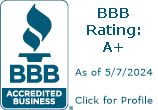With the current economic slowdown, most taxpayers have seen their stocks’ values decline in recent months. The Federal Reserve has lowered interest rates as a way of providing economic stimulus. For taxpayers who are involved in certain types of transactions, these events can have a significant impact on tax and estate planning strategies.
Estate planning
One of the best estate planning strategies is to make gifts to family members when assets are at a low value. This gets the assets out of a person’s estate and the hope is that they then significantly increase in value in the future. In this case, all of the appreciation on the asset after the date of the gift would not be included in the donor’s estate. If you own assets (for example, stocks, bonds, real estate, partnership interests in hedge funds, closely-held business interests, etc.) that have recently declined in value, but you believe that the value of these assets will significantly appreciate in the future, consider a gifting strategy now to help reduce your taxable estate. If you think that this strategy might be of value to you, please consider immediately scheduling a consultation to fully explore this option.
Interest rate reduction
There are tax planning strategies to consider when interest rates move up or down dramatically. In our current low interest rate environment, one significant strategy is to loan family members money at a very low rate of interest for long periods. For example, if a wealthy individual loaned his adult child $100,000 at the federally allowed interest rate of 4% for nine years with only interest payments due annually, no gift tax implications would apply (assume the child has other investment income of at least $4,000 to cover this interest). If the adult child used that $100,000 to buy bank stocks (some of which are paying an 8% dividend) today, and the dividend was a qualifying dividend with a maximum tax rate of 15%, then a potential good tax strategy will be accomplished. The child will have $8,000 of dividend income and, after tax, will have $6,800 of cash flow net. The $6,800 would be enough to pay the potential $4,000 interest on the loan and net $2,800 after tax. Further, the child could also enjoy the benefit of any appreciation in the stock for the next nine years. The parents have effectively transferred the potential appreciation on their stock for the next nine years to the child without any gift tax implication, and the parents will get their loan back at the end of nine years. This is just one of many strategies that could be considered. And, should tax rates on dividends change during the nine years, the child can sell the stock, repay the loan, and the parents can adopt a more appropriate tax strategy.
Capital losses
The basic tax law regarding capital loss is as follows: if you sell a stock that you held for greater than one year at a loss, that loss can offset, dollar for dollar, any capital gains that you might have. If you do not have any capital gains in a year, you can offset up to $3,000 of a capital loss against ordinary income and any remaining loss carries on the future years.
Now, many clients who have invested in stocks for years, even in today’s market, might still have significant appreciation on their stock, so that they would have a capital gain on a sale. Let’s assume that other stocks they have held for a shorter time might be sold at a loss. We have seen that some clients have a large concentration of their wealth in one stock, and while diversification would generally be a good deal, the client has been unwilling to pay the tax on the gain. As a tax planning strategy today, if you recognize a loss on some stocks in your portfolio, this loss can be used up to the gain that you could recognize on another stock in which you are highly concentrated. In this way, you can diversify your portfolio without a tax burden.
Real estate losses
If you have invested in rental real estate, it is important to understand the tax consequences of a sale. Generally, if you hold the property for more than one year, and sell it at a gain, you qualify for favorable long term capital gain treatment. A planning strategy would be to sell certain stock in the same year at a loss, so that this capital loss could offset the capital gain. If you instead sell the rental real estate at a loss, this loss is fully deductible without limit against other ordinary income, such as wages.
If you feel that any of the above ideas could possibly apply to a situation you have, please feel free to give us a call to discuss these opportunities fully.


